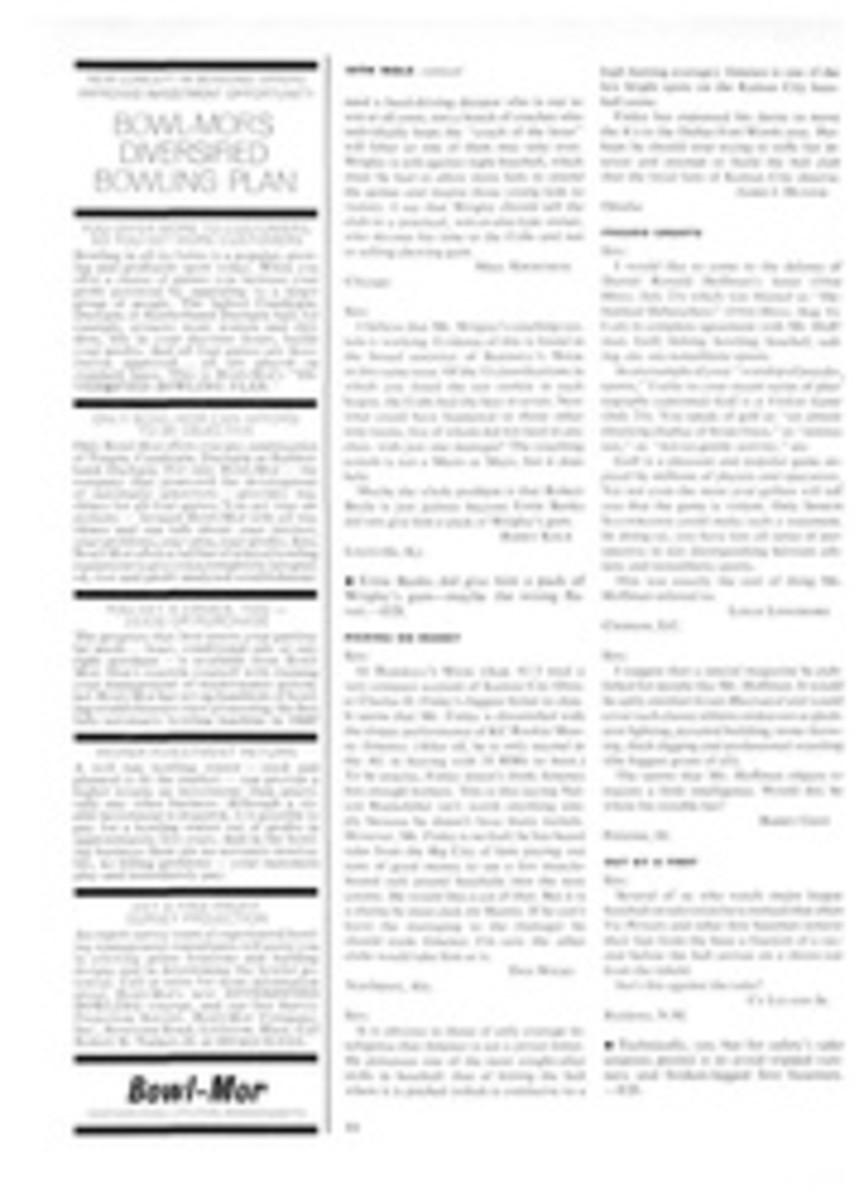
THE TROUBLED HUNTER
There are fewer ducks this year than last, says the U.S. Government.
There are more ducks this year than last, says Ducks Unlimited.
It is amid a difference of opinion just that blunt that Interior Secretary Stewart L. Udall this week will announce the federal regulations for the coming duck-hunting season—regulations certain to provoke cries of protest from hunters everywhere who fear that scenes like the one at right are disappearing forever.
One of the disputants in this shooting war is the U.S. Fish and Wildlife Service. Its surveys show that the duck population is down substantially from last year—and it was pathetic then. (It is on the basis of information gathered by this Government agency that hunting seasons and bag limits are set.)
This isn't so, protests Ducks Unlimited, a civilian, nonprofit organization which has spent $8 million in 24 years to improve—and help save—duck hunting in America. DU conducted its own surveys and found this breeding season to be the best in the past three years. The hunter is afraid the Government is right, hopes DU is right, and above all wishes that the two agencies could agree so that the future of the sport would be clearer. But the agencies don't agree.
The Fish and Wildlife Service conducts waterfowl counts each spring and summer in the potholes and sloughs of the northern U.S. and in the Canadian provinces of Saskatchewan, Alberta and Manitoba, where up to 80% of the continent's waterfowl population breeds. In 1961 it found that breeding conditions were the worst since the dust storm era of the "dirty '30s," and seasons and bag limits across the country were slashed drastically. As a result, nearly one fourth of the country's duck hunters abandoned the sport, with a consequent loss of $1,300,000 in federal duck stamp sales—money that would have been used for wildfowl conservation.
By the end of this July the Fish and Wildlife Service had completed its 1962 surveys, and was back with still worse news. It told the Interior Department that even in areas where water conditions were good—and indeed the harsh five-year drought seemed to be breaking at last—the number of ducks was the lowest in 11 years, was down an average of 17% from a year ago, and the brood count showed "decreased production." Mallards and pintails, the most heavily hunted species across the country, were off. Redheads and canvas-backs were far below par and would need the protection of a closed season again. Only geese seemed to have held their own on all four of the huge flyways which wildfowl follow on their way south. Thus, hunting seasons might well be sharply reduced again.
Ducks Unlimited does not dispute all the Government's data, but disagrees strongly with the Government's conclusions. Last week in New York City, Executive Consultant Arthur M. Bartley explained that DU's early surveys, like those of the Fish and Wildlife Service, showed fewer breeding pairs on the prairies than last year. "However," said Bartley, "during our July brood count, we found that potholes and sloughs in most of the prairie breeding areas were filled with water. We also found that a phenomenal number of young ducks had been successfully hatched." Bartley added that "the success of this year's first nesting, though unusually late in the breeding season, has been the greatest for all species since 1959."
More specifically, DU found mallard and pintail populations up from last year. In fact, it even found the breeding success of the long-suffering canvasbacks and redheads to be "most encouraging."
The inconsistency between Fish and Wildlife Service surveys and those made by DU is puzzling to the duck hunter, whose only real knowledge about waterfowl populations comes from scattered observations made during the gunning season. A Fish and Wildlife Service representative in Canada, who understandably wishes to remain anonymous, interprets the discrepancy between the two surveys as follows: "The Government finishes its July brood count before DU, too soon to get accurate figures on ducklings hatched late. As a result, federal regulations are based primarily on winter and spring duck counts." Thus the Government's count is conservative—perhaps intentionally so.
A wildlife expert in Washington theorized recently that hunting pressure grew too fast after World War II, and that making things tough for duck hunters is one sure way to prevent future growth. Some sportsmen feel the strict federal regulations reflect pressure by antihunting factions such as the National Audubon Society, whose president, Carl W. Buchheister, last week urged that all duck hunting be banned this year.
Some Fish and Wildlife people privately suggest DU deliberately inflates the status of the duck population in the hope that bag limits and seasons will be increased and the group's backers will be able to kill more ducks. DU's brood count prognostication is attacked as "too hasty," and the point is made that many immature ducks may not survive predatory animals and other natural hazards.
This year most state game department officials seem to be siding strongly with DU. Some have bluntly condemned the Government's method of establishing seasons and bag limits. They contend that regulations should be more sensitively tailored to each flyway. Last week the states, through their flyway council delegates, presented their recommendations to the Government.
The Atlantic and Pacific flyway councils were particularly unhappy at the possibility of further shooting restrictions. The Atlantic Waterfowl Council claims that in states north of Delaware Bay many migratory birds, including black ducks, scaup and goldeneyes, are drawn from breeding grounds not affected by drought and not carefully surveyed by federal crews. The Pacific Flyway Council offers the same argument, claiming that most ducks using the West Coast migration route breed in Alaska, western Alberta and other areas not generally affected by drought. Consequently John Biggs, director of the Washington Department of Game and chairman of the Pacific Flyway Council, has asked the Government for a 90-day season, 15 days more than last year.
"More ducks have wintered in this flyway in the last five years than at any time in the past," he says. "The Fish and Wildlife Service knows this; they conduct the winter waterfowl inventories here every year." Biggs added that hunters on the West Coast are losing interest in ducks. "You can hardly blame them when the federal regulations are biologically unsound."
The flyway councils concur on another point: that the Government is too concerned with mallards, pintails and teal. They want the Government to try to divert at least some of the hunting pressure to less popular species by easing bag limits on them.
Thus, in a shot-and-shell atmosphere of conflicting claims and shortening tempers, the hunter's future for at least one more season is being settled. Those who can still smile about the ever-stricter regulations may enjoy the suggestion of Theo Cromer, a Fort Worth sporting goods dealer who is considering marketing a black-and-white-striped suit for hunters. "If a man is going to prison for shooting the wrong duck," says harassed hunter Cromer, "he may as well be dressed for the occasion."
PHOTO

